READY TO GET STARTED?
REQUEST A FREE ESTIMATE
Fill out the form below or call (888) 466-7849 for a free, no-obligation estimate.
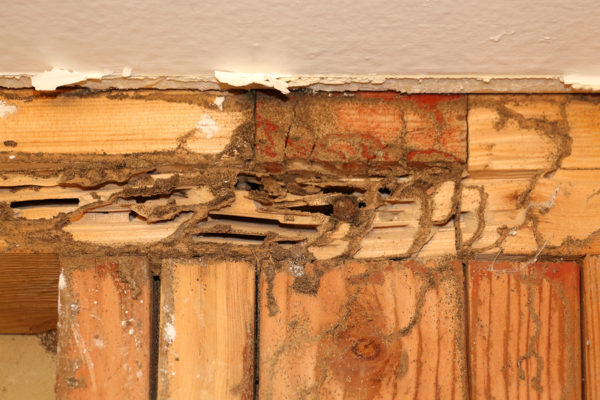
If you’ve been outside lately you’ve probably seen signs of spring – blooming flowers, pollen that aggravates our allergies, and lots of new insects buzzing around. Another thing that spring brings is swarms – of termites! Termites are present year round but their swarming season is during spring and early summer.
Termites cause billions of dollars in damage to homeowners each year. Here in the Southeast, subterranean termites are the most common types and are particularly destructive. These insatiable eaters can damage not only wooden structures, but have even been known to cause damage to brick and concrete homes as well. Termites can invade your home through cracks and holes as small as 1/32 of an inch!
Swarms are most common in spring and summer because they are triggered by warm, humid weather. Swarming marks the start of a new termite colony. Winged termites leave their nests when they become overcrowded and their isn’t enough food to sustain them. They then take flight and actually reproduce in mid-air. The females will then shed their wings and fall back to the ground. They then go in search of a new location to start their colonies.
Swarmers don’t usually cause any damage but once they establish their new colonies their offspring can cause significant damage – usually within 2 years. If you see flying termites it can signal one of two problems:
If you see winged termites inside your home this is a good indication that you already have an established termite colony inside or that there is existing damage already.
What can you do to prevent termites from coming into your home? Check out these tips to keep the termites out!
As always, if you suspect you have termites or find signs of damage, contact a termite control company who can come in and do a thorough inspection and set you up with a comprehensive treatment plan.
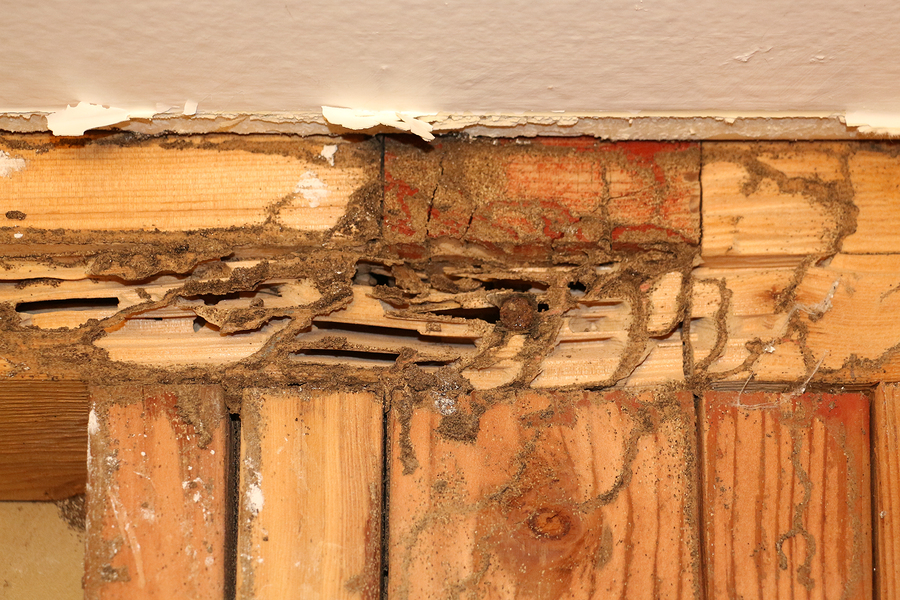
Here in the south, nothing causes terror or fear more than the word, termite. Termites cause more than $5 million dollars in property damage throughout the United States. And what’s worse, most damage is not covered by homeowner’s insurances policies.
Before it gets out of control, look for signs of termites and consider getting a preventative termite treatment and termite warranty from an exterminating company.
Swarmers are your first sign that things may be awry, because while swarmers do not cause wood damage, they are a sign that a destructive colony is nearby. Look around doors and windowsills and for discarded wings. This is one of the first signs of a termite infestation.
If you notice mud tubes or tunnels along the foundation of your home, the next step would be to contact your pest control provider to schedule a termite inspection. Termites use the mud tubes to keep moisture when traveling to and from their colony and your home (their delicious food source).
Other signs of termites that you may notice:
If you are able to get close enough to get a look, make sure that that you are dealing with a swarmer; flying ants are often mistaken for a flying termite.

If you do not find any of the signs of termites, now’s the time to get preventative termite protection! Sentricon Always Active, a termite baiting system, is the best protection to have for your home; it’s environmentally-responsible and comes with a lifetime termite warranty.
To schedule a free termite inspection, call (888) 466-7849 today!
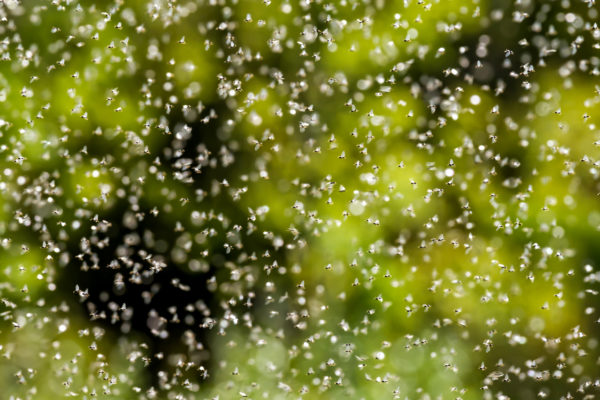
The change of season from winter to spring brings warm weather, sunshine, and … bugs! This is the time of year when many pests emerge from overwintering and begin the mating process. Spring is also known as swarm season – because this is the time when termites and flying ants emerge in droves, sometimes in swarms of thousands! While flying ants can cause problems in and around your home, termites are much more common – and much more costly! How can you tell if those swarming insects are terrible termites or flying ants? Check out our handy reference below for the key differences between the two, as well as what to do if you have these pests swarming in or near your home.
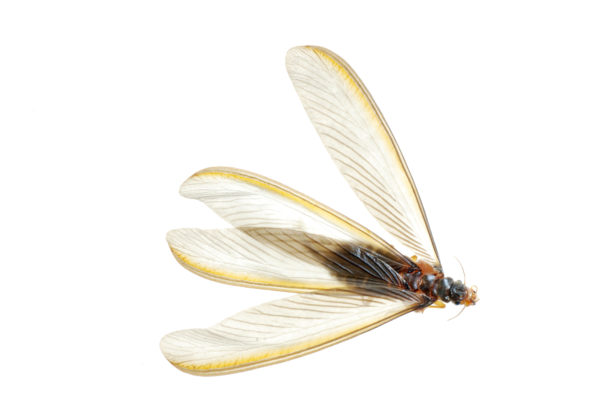
Termites usually swarm once a year for reproduction and expansion of their colonies. Swarms mark the official beginning of termite season. Subterranean termites swarm in spring and during the daytime. Drywood termites swarm in late summer and early fall. Dampwood termites swarm in the summer.
Termites swarm after their colony reaches a certain size and the weather conditions are optimal. The termites are attracted to light and are often found near windows and light fixtures. Swarming termites will try to squeeze through racks and crevices in your walls and foundations to try and reach open air. If you see swarming termites then there is a good chance there is a well-established termite colony in or near your home.
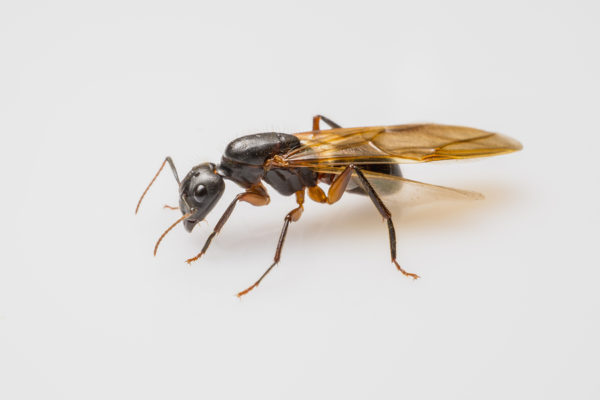
Flying ants will swarm in late spring and early summer. They have to have bright sunlight, low winds, high humidity, and warm temperatures to swarm. They prefer to swarm after there has been 3 to 5 days of rain.
Flying ants swarm for the same reasons as termites – to reproduce and expand their colonies. Flying ants don’t represent any greater threat to humans than their wingless counterparts. Flying ants aren’t as significant a threat to your home as termites but they can still cause damage. If you have flying ant swarms in your home there is a good chance you have an established ant colony in your walls.
So now that you can identify exactly what kind of pest is swarming around your home, what should you do next?
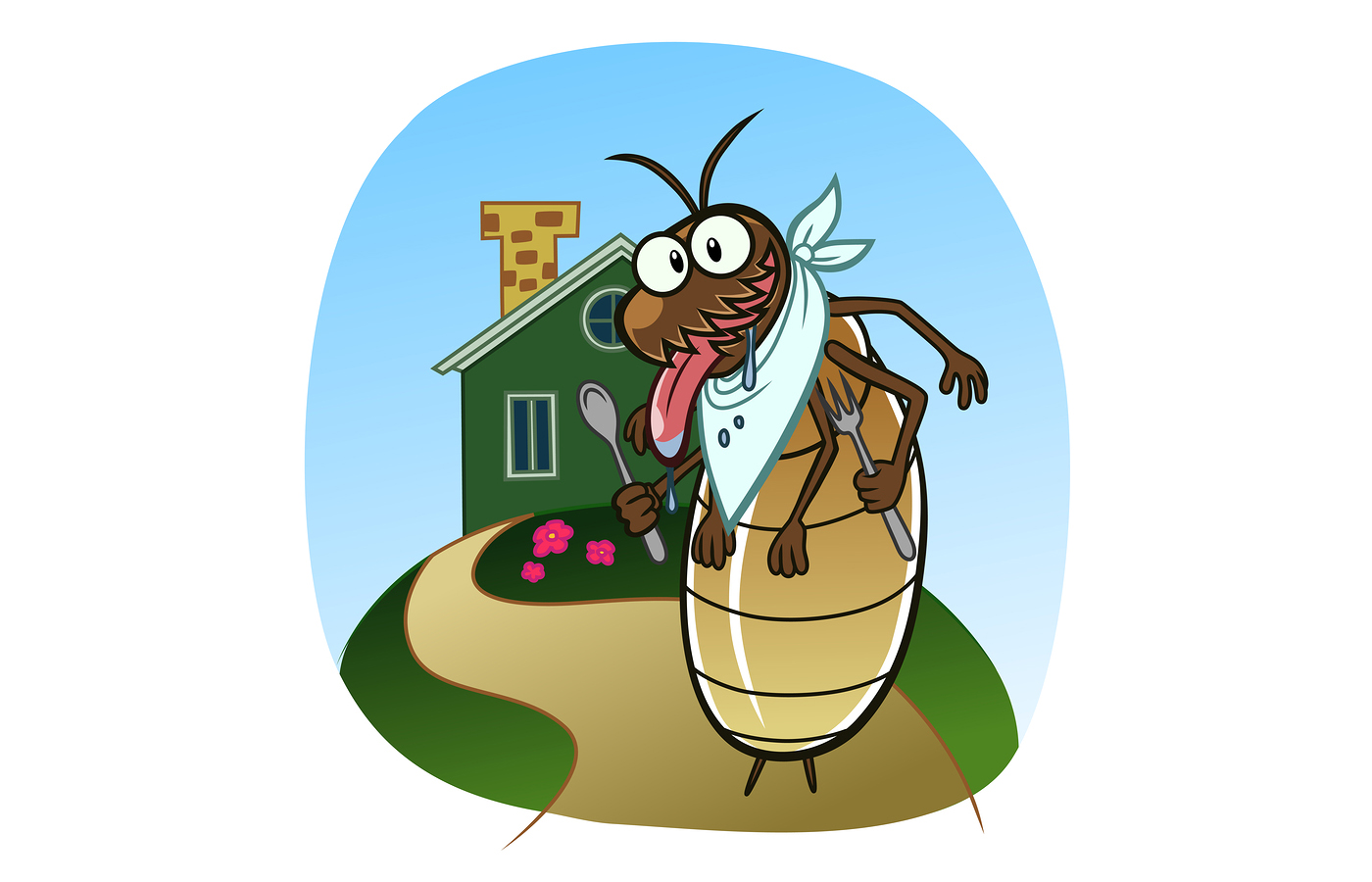
Most of us know that termites‘ preferred food source is often the wood our homes are constructed of and that they cause billions of dollars in structural damage each year. But aside from being a costly nuisance, termites are actually interesting and beneficial insects – here’s why:

Most of us know that termites‘ preferred food source is often the wood our homes are constructed of and that they cause billions of dollars in structural damage each year. But aside from being a costly nuisance, termites are actually interesting and beneficial insects – here’s why:
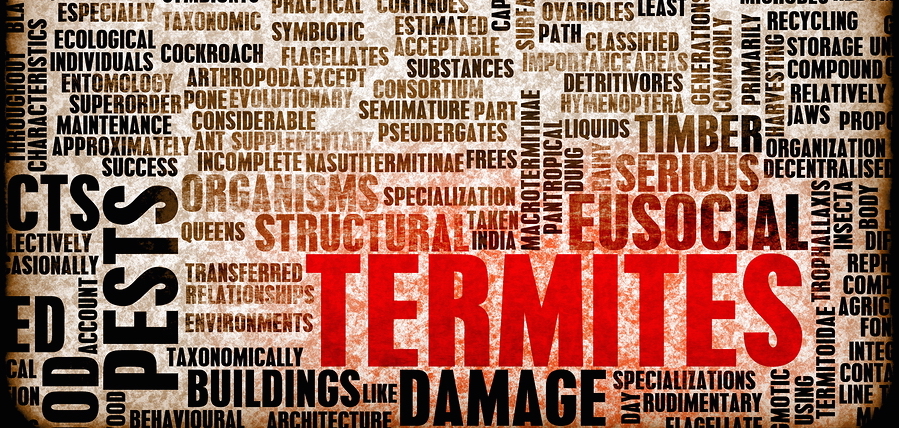
The first official day of spring is Sunday, March 20th (the earliest arrival of spring of our lifetime so far in the Northern Hemisphere, according the the Old Farmer’s Almanac). This is also the first official day of termite season!
Termites cause billions of dollars in structural damage each year in the U.S. Don’t let your home be part of the statistic! Here are some things you can do to prevent termite damage:
It’s also important to know what to look for. Identifying a termite infestation early is key in preventing damage to your home. Termites swarm in the spring and although swarming termites don’t cause damage, it’s a sign of a destructive termite colony nearby. Swarming termites are often mistaken for flying ants; they have two pairs of long narrow wings, equal in size and, unlike other termites in the colony, are dark or black in color. Warm or wet weather brings termite (subterranean) swarmers out of their nest, typically during daytime hours, to start new colonies. They’re attracted to light so you’ll most likely see swarming termites around windows, doors, and light fixtures, or the wings they sometimes leave behind.
If you notice termite swarmers in your home, it’s a good indication of an established termite colony nearby, that could be causing significant structural damage. If you have an active termite warranty, call your exterminator and request a termite inspection. If termite activity is found, you should be provided with termite treatment options and, depending on your warranty’s coverage, damage repair solutions.
If you don’t currently have termite protection, call a professional termite control company immediately. They will provide a thorough inspection of your home (usually free) and give you the best treatment options to eliminate the active termites and prevent a future termite infestation. Be sure your pest control provider offers multiple warranties with damage repair options. Some even offer lifetime damage repair warranties with termite baiting systems, like Sentricon Always Active, an eco-friendly alternative to termite control.
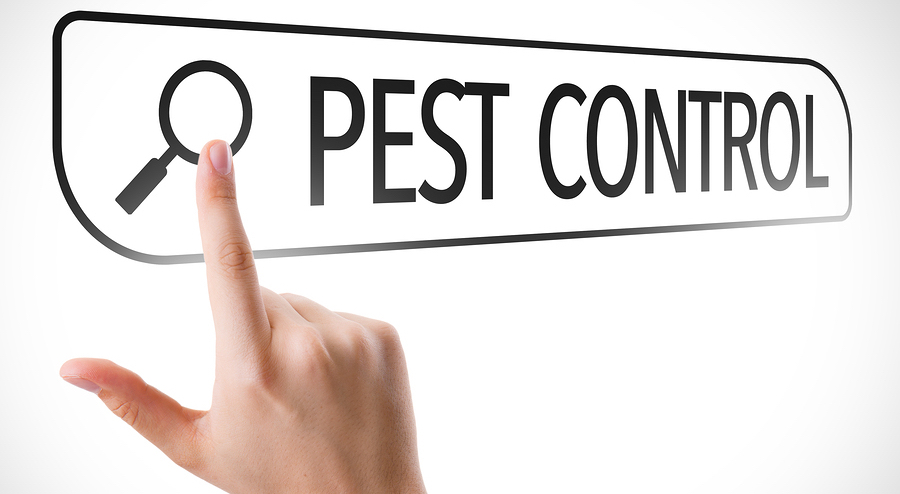
With so many exterminators to choose from, it can be overwhelming for a business or homeowner to determine which company is the best option. Here are a few things to look for when considering which pest control company is right for you:
Does the pest control company offer multiple services for pests, termites, mosquitoes, bed bugs, wildlife, and other household pests? As temperatures and weather conditions change throughout the year, it’s likely that you’ll encounter several different pests at different times. Having an exterminating company that can handle all of your pest needs will save you time AND money. Most often, the pest company can handle multiple service requests during one appointment, send you one bill for all services, that’s usually at a discounted rate (bundle services and SAVE!).
Is the environment and your family & pets a concern for you when considering exterminators? Most likely it is, and should be. Pest control companies today should offer green alternatives to traditional services – like green pest control, green termite control, and green mosquito control. With advancements in technology, green services are just as effective as traditional services if applied correctly and will give you peace of mind, knowing family and pets are not at risk. It’s also not a bad idea to ask for a list of products used. Some exterminating companies claim to offer “green” pest control, but are only using an integrated pest management (IPM) approach – which utilizes less product to target specific pests – but not always with eco-friendly pest control products.
Most pest control companies, like other services companies, will have customer reviews online or a word-of-mouth reputation. Use caution if a company has no reviews or if you’ve never heard of them; they may be newly established with less industry experience.
Because there is so much competition in the pest industry, some newer start-up companies won’t stay in business. While they may offer cheaper prices up-front, your warranty could be compromised, OR they could close their doors without fulfilling their agreement. It’s best to choose a company that’s been around for awhile, that has proven, effective pest control methods, offers highly-trained technicians, and that stands behind their warranties.
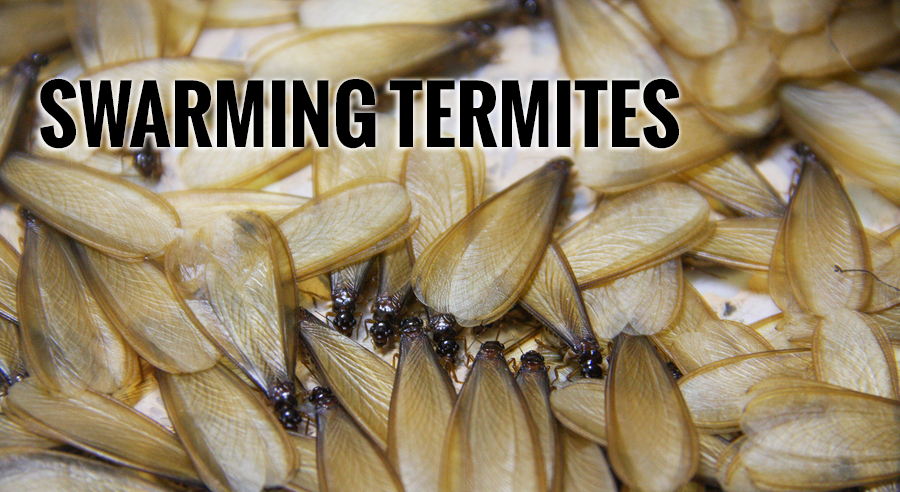
Termite swarmers, often mistaken for winged ants, are most active during the Spring months, when they fly away from their colony to reproduce. They’re attracted to bright, light areas and often seen around doors and windows in homes. While termite swarmers usually die within 24 hours and do not cause wood damage, they’re a sign that a destructive termite colony is near.
How can you tell the difference between flying ants and swarming termites?
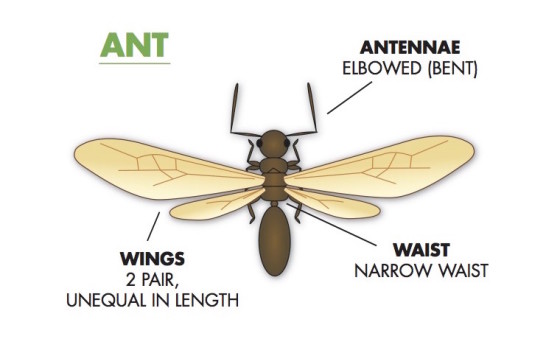
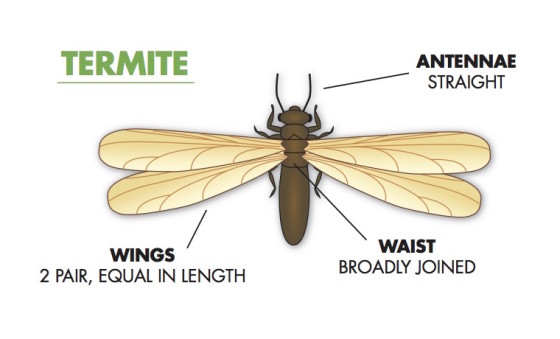
Because both pests are so small in size, it’s often hard to distinguish the difference. If you’re unsure, contact your local exterminating company. A pest control professional will quickly identify the issue and provide you with treatment recommendations. If you are seeing swarming termites, it’s important to have your home treated for termites as soon as possible, preferably with a termite warranty. This will protect you against future infestations and often damage repairs. Again, swarming termites do not cause property damage…but they do indicate that a colony of damage-causing termites is close by, with your home being their current or potential food source.
There are several termite treatments available for termites. A termite baiting system is a popular choice, for many reasons. Baiting systems, like Sentricon Always Active, are proven to eliminate entire colonies of termites. They also provide ongoing protection and are eco-friendly alternatives to traditional liquid soil termite treatments. Most baiting systems also come with a great warranty, and can include lifetime repair coverage for your home.
For more information on termite control services in your area, click on the links below.
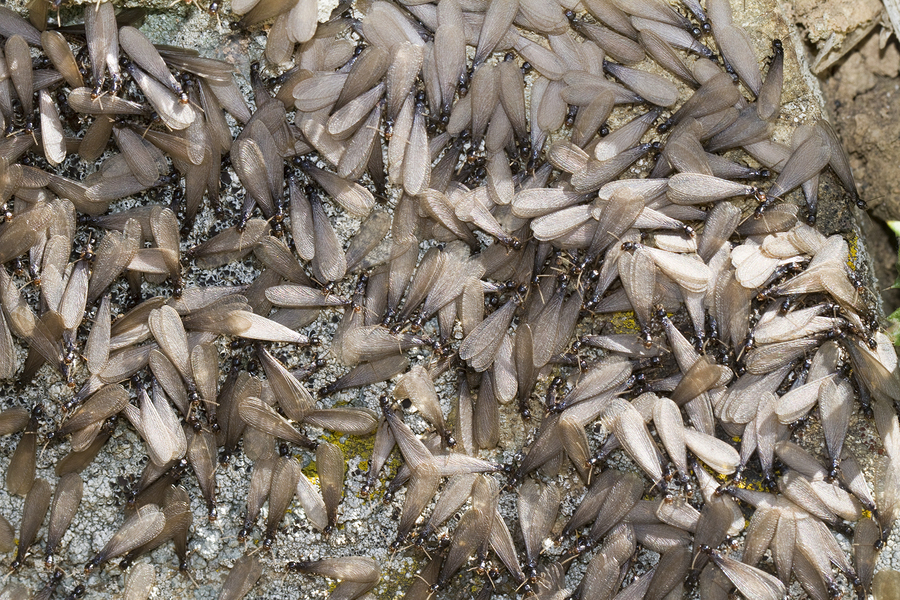
You probably aren’t too concerned with termites just yet, with the recent icy weather here in Georgia and the Southeast. BUT…prevention is key to preventing termite damage and now is the time to get prepared.
In the South, termites start swarming in early Spring. So if you don’t already have a termite control plan, it’s time to think about getting one. While swarming termites do not cause structural damage, it’s a sign that a termite colony is hard at work nearby. This could mean severe structural damage to your home that will result in hundred and thousands of dollars in repair costs. So what’s the solution?
There are several methods of termite control and deciding which termite treatment is right for your home can be overwhelming. After all, we’re talking about protection for one of your largest investments! And since termite damage typically isn’t covered by homeowners insurance, it’s important to not only have your home treated, but to have a solid termite warranty.
If you have a really good understanding of how termites work, you could attempt DIY termite control. There are several options for this from traditional liquid barrier treatments to termite baiting systems. This can be a difficult task if you have any slabs attached to your home or a basement. A liquid barrier must be complete with no breaks in order to keep termites out. Want a pro? Keep reading.
Some pest control companies will recommend a liquid treatment if you have active termites or damage. This provides instant and long-term termite protection. Make sure your termite company includes a good warranty with your treatment, ideally one that covers termite re-treatments and any damage caused post-treatment.
This type of termite treatment is ideal when your home is in the construction phase. The wood frame is treated with a product called borates, elements from the earth, that will give you permanent termite protection and also help ward off common household pests.
Baiting Systems are proven effective at eliminating entire termite colonies underground around your home, less invasive than liquid treatments, ideal for new and existing construction, and usually come with a lifetime warranty. It’s also the environmentally-responsible way to protect your home from termites, by eliminating the use of hundreds of gallons of chemicals. With Sentricon Always Active, our preferred choice for baiting systems, monitoring devices are placed in the ground strategically around your the perimeter of your home. The devices have a bait tube inside that termites are attracted to. Termites will find the stations, eat the bait and share with their colony, resulting in colony elimination.
1. Keep mulch away from your home’s perimeter. This is a food source for termites.
2. Keep any items made of wood away from your home. Firewood, cross ties, that construction project you’ve been working on…all are potential food sources for termites.
3. Keep your gutters cleaned. Termites love moisture so keeping the ground around your home dry is key.
If you see a swarm of “flying ants”, it’s probably termites. Find out more on how to tell termites from ants here.
Termite swarmers will usually leave behind small transparent wings. If you see anything like this around your home, call an exterminator.
For more specific information on termite control in your area: